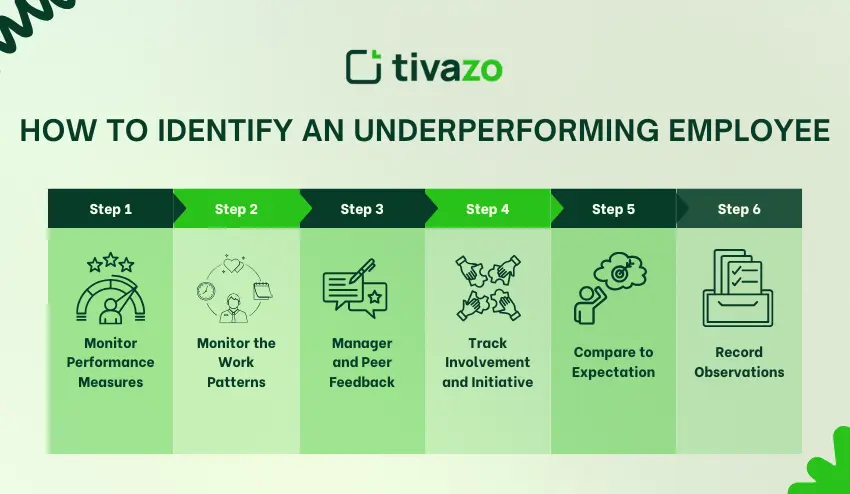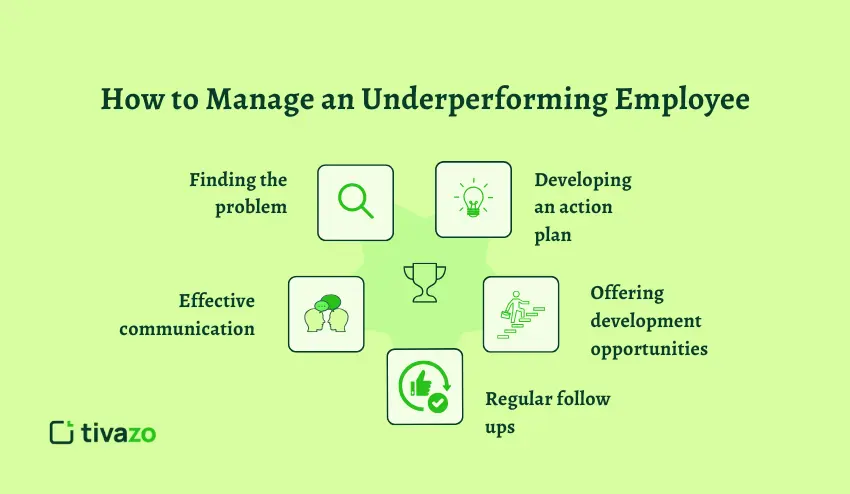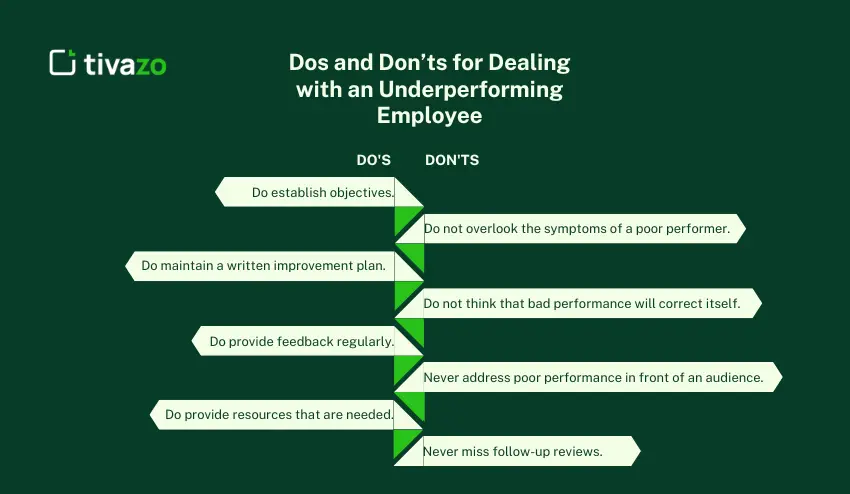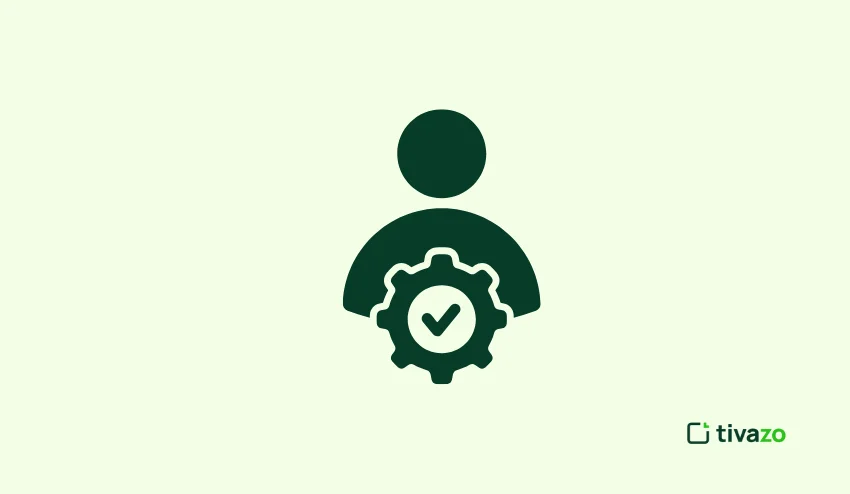An underperforming employee may drag down projects, demoralize the rest of the team, and affect the overall business performance. A missed deadline, low performance on important tasks, or low engagement, these problems do not solve themselves. As a manager or a HR leader, you must handle low performing employee in a manner that will correct the reasons, encourage improvement and safeguard team productivity.
This guide will provide some clear steps and practical advice based on years of experience in performance management. You will know how to recognize an underperforming employee, why the employee is performing poorly, how to handle the situation, and develop an action plan that will enhance the performance of the employee but still provide a good employee experience.
Key Highlights:
- What Is Underperformance in the Workplace?
- Who Is an Underperforming Employee?
- How to Identify an Underperforming Employee
- Signs of an Underperforming Employee
- Causes of Underperformance
- The Impacts of an Underperforming Employee
- How to Manage an Underperforming Employee
- Tips for Turning an Underperforming Employee Around
- Dos and Don’ts for Dealing with an Underperforming Employee
What Is Underperformance in the Workplace?
An underperforming employee is an employee who is not performing to the expectations agreed upon in the job. This may include failure to meet deadlines, doing shoddy work, lack of initiative, and failure to contribute to team objectives.
Underperformance is not merely a couple of errors, but rather a regular trend in which performance does not match what was agreed upon or stated in the job description. It might show itself in the form of unmet goals, low output, or work apathy.
One should keep in mind that underperformance can be caused by underlying reasons. This can be caused by lack of clear instructions, lack of skills, lack of motivation, personal problems or even the work environment. A good leader will not only look at the poor outcomes, but they will take time to find out why the employee is performing poorly before making a decision on how to make the employee improve.
Who Is an Underperforming Employee?
An underperforming employee is not just someone who is having a rough week. They are always performing below what is required, despite the availability of resources and training.
They can achieve some targets but cannot deliver on essential expectations and this impacts the performance of the whole team. Identification of a poor-performing employee early enough can help to avoid future performance problems and reduced productivity.
How to Identify an Underperforming Employee
The process of identifying an underperforming employee does not entail responding to a one-time error, but rather, it is a matter of recognizing a pattern that has been persistent over time. Proper identification will enable you to solve problems before they impact the whole team or business outcomes.
The following are effective ways of identifying an underperforming employee:

Step 1: Monitor Performance Measures
Track essential metrics by using people analytics, performance metrics and time tracking software, or performance dashboards. Examine the number of deadlines that are met, the rate at which tasks are accomplished, and the quality of the work performed within weeks or months.
Step 2: Monitor the Work Patterns
Look out for actions like procrastination, missing meetings, low turnout in team activities or frequent mistakes. One error does not indicate poor performance, but a series is a red flag.
Step 3: Manager and Peer Feedback
Speak to direct managers and peers to gain an understanding of the contribution of the employee to projects and team objectives. They tend to see what the numbers cannot show.
Step 4: Track Involvement and Initiative
Pay attention to whether the employee is engaged in work, is proactive, or want to develop themselves. Poor participation is one of the greatest signs of poor performance.
Step 5: Compare to Expectation
Use the job description of the employee, goals and team standards as a reference. When outcomes are not up to these expectations on a regular basis, then you might be having an underperforming employee on your hands.
Step 6: Record Observations
Record missed targets, mistakes and feedback. This record will be critical in developing a fair and implementable improvement plan in the future.
These steps will help you to correctly determine an underperforming employee and make sure that your next steps (coaching, improvement plan, etc.) are not based on assumptions but on facts.
Signs of an Underperforming Employee
It is important to identify the signs of an underperforming employee early enough before small problems turn into big problems. Even though certain errors are inevitable, frequent patterns indicate that there is a more serious issue that should be dealt with.
The following are some of the common symptoms to watch out:
Increased mistakes at work
The red flags are frequent errors, poor quality of work, or omitting important details. People do make mistakes but frequent mistakes can indicate inattentiveness, incompetence, or lack of interest.
Frequent Missed Deadlines
An employee with bad performance will struggle to meet deadlines even on routine tasks. The frequent delays can lead to the change in project timelines and pressure other members.
Decreased Productivity
A noticeable drop in output or low level of task completion compared to other peers is a strong indicator of underperformance. Monitoring the performance indicators over a period of time will assist in ensuring whether this is a trend.
Avoidance of responsibility
Employees that do not take ownership, avoid difficult tasks or continually pass the buck may be underperforming. This may interfere with the team dynamics and reduce efficiency.
Low Initiative and Engagement
A poor performer will not be keen on attending meetings, sharing ideas, and seeking development opportunities. The passiveness of the person will have harsh impacts on the innovation and the team spirit.
Impact on the Team
Sometimes the least obvious sign is the effect on colleagues. Failure to cooperate, complaints by team members or a decline in overall motivation in the team can be signs that the poor performance of one employee is affecting the team.
Feedback resistance
A worker who constantly refuses constructive feedback or fails to implement suggested changes may be experiencing problems with improving performance.
Denial to grow professionally
The unwillingness to learn or inability to use training programs could mean that the employee is not committed to improving.
Recognizing these indicators at an early stage can help, managers and HR leaders to take action in time. The issue of a poor employee can be solved with immediate feedback, assistance, and structured improvement plans before the problem affects productivity and the morale of the rest of the team negatively in the long term.
Causes of Underperformance
It is important to know the reason why a struggling employee is underperforming to manage him or her. Poor performance hardly occurs without a cause. This way, by determining the underlying causes, you will be able to develop a specific action plan that will enhance performance and help the employee to grow.
Here are the most common causes of underperformance:
Poor Communication from Management
Employees may not be able to perform when managers do not give clear instructions, feedback, or expectations. Misunderstandings of priorities, tasks, or deadlines usually result in repeated errors and unmet objectives.
Lack of Set Goals or Performance Expectations
An employee might not be aware of what success is without having clear goals. This may lead to unsteady performance, poor interaction, and frustration on the part of the employee and his/her team. Goal setting is an important component of performance management and it enables the underperforming employee to know what is expected of him.
Poor or Insufficient Career Growth or Development Opportunity
An employee can perform poorly when he/she feels stagnant or lacks a career development path. An underperforming employee can be motivated by offering him/her development opportunities, training, or mentoring so that he/she can perform better.
Workplace Conflicts

Team conflicts, personality issues, or poor teamwork can influence the concentration and efficiency of a worker in a negative way. Even skilled and talented employees may produce low results in case their working environment is negative or unproductive.
Individual Problems that Impact on Work Concentration
External influences such as health problems, family or financial stress can reduce the concentration of an employee. Mental fatigue can also be a factor affecting the employee. When the leaders handle an underperforming employee with care and compassion, they are likely to improve and perform better.
Skill Gaps or Inadequate Resources
In some cases, the underperformance is due to the fact that the employee does not have the skills or tools required to do his work. This cause can be solved by providing specific training or resources.
By determining the cause of underperformance, managers and HR leaders will be able to develop a customized performance improvement plan. By knowing the reasons behind the problems, you will be able to drive an underperforming employee to improved performance, keep the morale of the team up, and safeguard the overall productivity.
The Impacts of an Underperforming Employee
The impact of an underperforming employee may extend to the team, projects, and business as a whole. The major effects are:
- Projects and Deadline Delays- Delays in deadlines or poor quality work may create workflow disturbances and compel other team members to complete more tasks.
- Low Team Morale-When a team member is consistently underperforming, this may cause frustration to other team members, decrease engagement and lead to tension within the team.
- Reduced Productivity- Teams will not be able to achieve targets, and managers will take additional time to correct errors or supervise work.
- Heightened Stress Rates- Team members and managers can be stressed by filling performance gaps and handling extra work.
- Adverse Effect on Company Culture – A history of unresolved underperformance may undermine accountability, teamwork, and trust.
- Increased Turnover Risk- High performing employees may quit when they perceive that the underperforming employee is not being punished, and the underperforming employee may also end up quitting or being terminated.
- Reduced Employee Engagement – In case of underperformance, the employees can become demotivated or disengaged with their own duties.
- Impact on Client Satisfaction and Business Results – Projects affected by underperformance may lead to delays, errors, or missed client expectations, affecting company outcomes.
These adverse effects can be avoided by dealing with an underperforming employee early with clear feedback, structured improvement plans, and developmental support, keeping the work environment productive and positive.
How to Manage an Underperforming Employee
The effective management of an underperforming employee includes:

- Finding the problem- Apply performance management tools and feedback.
- Effective communication – Talk about certain performance problems.
- Developing an action plan- Establish improvement goals and timelines.
- Offering development opportunities – Provide training, mentoring or role changes.
- Regular follow ups- Keep track and make necessary changes.
By managing an underperforming employee in a structured way, you will increase their performance and have a positive working environment.
Tips for Turning an Underperforming Employee Around
- Break down goals into small and measurable steps.
- Maintain a high level of employee engagement by checking on them.
- Monitor changes using a written performance improvement plan.
- Give positive criticism without breaking confidence.
- Identify improvement to encourage the struggling employee more.
With a considerate strategy, a non-performing employee can be changed into an effective team player.
Dos and Don’ts for Dealing with an Underperforming Employee

Dos:
- Do establish objectives.
- Do maintain a written improvement plan.
- Do provide feedback regularly.
- Do provide resources that are needed.
Don’ts:
- Do not overlook the symptoms of a poor performer.
- Do not think that bad performance will correct itself.
- Never address poor performance in front of an audience.
- Never miss follow-up reviews.
Final Thoughts
A poor performing employee may influence the team, projects and business. The trick is to recognize the problems in time, learn their causes and develop a concise improvement strategy.
An underperforming employee can be changed with frequent feedback, support, and development opportunities and become a positive contributor. Early action saves team morale, improves productivity and makes your business successful.




